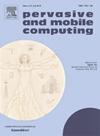识别:使用设备指纹和机器学习的智能设备识别
IF 3.5
3区 计算机科学
Q2 COMPUTER SCIENCE, INFORMATION SYSTEMS
引用次数: 0
摘要
物联网(IoT)由快速增长的异构设备网络组成,这些设备在广泛的应用领域中自主监控、收集和交换数据。物联网设备的快速增长凸显了可扩展、安全和自适应网络管理策略对动态网络的重要性。在这种情况下的一个关键挑战是设备的自动识别,这对于检测和减轻可能危及网络完整性的恶意设备至关重要。准确的设备识别通过促进早期发现异常或敌对流量来增强动态物联网环境的安全性。设备指纹识别通过利用协议和流量特征提供了一种非侵入性的解决方案,而不依赖于特定于供应商的标识符。在这项工作中,我们提出了一个基于机器学习的轻量级高效物联网设备识别框架。我们的模型将随机森林分类器与数据驱动的特征选择策略相结合,该策略强调来自数据包头和交通流量统计的低开销特征。该方法具有较高的分类性能,识别一般设备类别的准确率为97.32%,识别特定设备类型的准确率为94.39%。与传统分类器相比,它的计算效率提高了大约40%,使其非常适合在资源受限的边缘环境中部署。我们在不同的现实条件下评估了该模型,包括时空交通变化、操作模式变化和不同的采样间隔。与已建立的分类器(如J48、SMO、BayesNet和朴素贝叶斯)进行比较实验,使用标准指标,包括精度、召回率、f1分数和推理延迟。我们的方法通过自动识别和分类动态异构环境中的物联网设备来增强网络安全性。它轻量级、可扩展,非常适合在资源受限的物联网场景中部署。本文章由计算机程序翻译,如有差异,请以英文原文为准。
IDENTIFY: Intelligent device identification using device fingerprints and machine learning
The Internet of Things (IoT) consists of a rapidly growing network of heterogeneous devices that autonomously monitor, collect, and exchange data across a wide range of application domains. The rapid increase of IoT devices highlighted the importance of scalable, secure, and adaptive network management strategies for dynamic networks. A key challenge in this context is the automatic identification of devices, which is critical for detecting and mitigating malicious devices that can compromise network integrity. Accurate device identification strengthens the security of dynamic IoT environments by facilitating early detection of anomalous or adversarial traffic. Device fingerprinting offers a non-intrusive solution by leveraging protocol and traffic characteristics, without relying on vendor-specific identifiers. In this work, we propose a lightweight and efficient framework for IoT device identification based on machine learning. Our model utilises a Random Forest classifier in conjunction with a data-driven feature selection strategy that emphasises low-overhead features derived from packet headers and traffic flow statistics. The proposed approach achieves high classification performance, attaining 97.32% accuracy in identifying general device categories and 94.39% accuracy for specific device types. It also demonstrates approximately a 40% improvement in computational efficiency compared to traditional classifiers, making it well-suited for deployment in resource-constrained edge environments. We evaluate the model under various real-world conditions, including spatiotemporal traffic variations, changes in operational modes, and different sampling intervals. Comparative experiments with established classifiers—such as J48, SMO, BayesNet, and Naive Bayes—are performed using standard metrics, including precision, recall, F1-score, and inference latency. Our approach strengthens network security by automatically identifying and classifying IoT devices in dynamic, heterogeneous environments. It is lightweight, scalable, and well-suited for deployment in resource-constrained IoT scenarios.
求助全文
通过发布文献求助,成功后即可免费获取论文全文。
去求助
来源期刊

Pervasive and Mobile Computing
COMPUTER SCIENCE, INFORMATION SYSTEMS-TELECOMMUNICATIONS
CiteScore
7.70
自引率
2.30%
发文量
80
审稿时长
68 days
期刊介绍:
As envisioned by Mark Weiser as early as 1991, pervasive computing systems and services have truly become integral parts of our daily lives. Tremendous developments in a multitude of technologies ranging from personalized and embedded smart devices (e.g., smartphones, sensors, wearables, IoTs, etc.) to ubiquitous connectivity, via a variety of wireless mobile communications and cognitive networking infrastructures, to advanced computing techniques (including edge, fog and cloud) and user-friendly middleware services and platforms have significantly contributed to the unprecedented advances in pervasive and mobile computing. Cutting-edge applications and paradigms have evolved, such as cyber-physical systems and smart environments (e.g., smart city, smart energy, smart transportation, smart healthcare, etc.) that also involve human in the loop through social interactions and participatory and/or mobile crowd sensing, for example. The goal of pervasive computing systems is to improve human experience and quality of life, without explicit awareness of the underlying communications and computing technologies.
The Pervasive and Mobile Computing Journal (PMC) is a high-impact, peer-reviewed technical journal that publishes high-quality scientific articles spanning theory and practice, and covering all aspects of pervasive and mobile computing and systems.
 求助内容:
求助内容: 应助结果提醒方式:
应助结果提醒方式:


